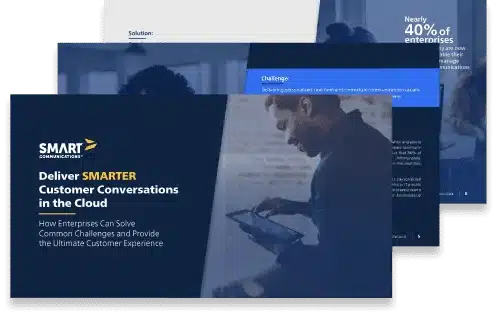3 Trends Transforming New Member Enrollment for Healthcare Payers
Healthcare payers are facing several new challenges from outside forces– from government regulations to ongoing technology innovation – but these challenges offer an opportunity for payers in healthcare to embrace change, examine their enrollment processes, and reflect on goals and expectations for the future.
With member engagement expectations being set by other industries like online retail and financial services, the digital transformation bar has been set high. Despite rising expectations and new rules and regulations to grapple with, many healthcare payers have barely budged from their analog ways. In this post, we dive into three key trends that are transforming member enrollment and how insurers can close the digital gap with healthcare payer solutions.
- Member Expectations are Higher than Ever
Achieving growth, countering competition, controlling costs, reducing risk and maintaining compliance are perennially at the top of every healthcare payer’s C-suite priority list. But as member expectations quickly evolve, member satisfaction has now become top priority. Results of a recent survey from HealthEdge indicate that member satisfaction “dominates boardroom agendas,” along with “competitive pressures, IT and business alignment and managing costs.”
- Stricter Government Regulations Require Digital Transformation
In 2018, the U.S. Health Care Transformation Task Force, an industry consortium made up of healthcare payers, providers, purchasers and patient advocates issued a set of guiding principles for how best to engage consumers from the beginning of their interactions with the healthcare system. The HCTTF recommended using modern ways of obtaining consumer input and providing interfaces that prioritize simplicity, clarity and transparency, including when obtaining information and coverage from a plan. Any of these recommendations could become rules or regulations at any time.
- …But Digital is Still Difficult for Many Payers
Recently, when consulting firm Deloitte surveyed 35 leaders of health payers, roughly half reported that they still struggled to prioritize overhauling their healthcare payer systems. Only two respondents said that they had modernized even one of five core technology platforms such as administrative, analytics, clinical, core and customer service and engagement.
These payers are missing out on some big benefits.
When J.D. Power analyzed responses from a 2021 commercial health plan member survey (32,066 members of 147 health plans in 22 regions throughout the United States), they found:
- Plans that invested in improving member information and communications increased their Net Promoter Scores by an average of 10 points,
- The perceived level of trust in those health plans increased two percentage points over the last two years, and
- 32% of members said they connected with their health plans via web, mobile app or text message in the past year.
The prior year’s study revealed that customer satisfaction is directly linked to customer engagement. Plans that offered personalized, relevant information to members had nearly 23% higher customer satisfaction scores versus plans that did not. This is notable because commercial health plans had among the lowest average customer satisfaction scores compared to other industries the firm evaluated.
Where do Payers Go from Here?
Member Engagement and Satisfaction Begins with Enrollment
The healthcare enrollment process has an outsized impact on member experience and plan profitability. That’s because it sets the bar for everything that follows. But enrollment is plagued by inefficiency and disconnected data. This creates anxiety for the member and introduces the possibility of fines for the healthcare payer.
Whether you’re signing new employers or enrolling individual plan members, you need to deliver a digital-first, frictionless experience. Yet many health insurance carriers are challenged by outdated, inflexible technology that relies on custom IT development. Traditional engagement strategies are siloed and inconsistent. Paper and fillable forms result in data errors and slow processing. Making sure healthcare enrollment forms and policy documents have the correct regulatory language by state and jurisdiction can be an incredible burden for compliance departments.
Insurers need to reimagine enrollment communications as two-way, digital conversations. This begins with prioritizing the digitization of healthcare payer systems and solutions. By improving the payer enrollment experience, carriers can reduce costs, improve overall utilization rates and increase member satisfaction.
To see how other healthcare payers have successfully transformed the member enrollment experience, check out Digital Enrollment and Onboarding for Health Insurance Plans.
About The Author
John Zimmerer is the Vice President of Vertical Marketing, Healthcare at Smart Communications, where he acts as a subject matter expert on the digital transformation of customer communications and data-centric, often form-based workflows. Most recently, John has been researching and writing about improving customer experience in healthcare and is regarded as a thought leader in this area. John has over 20 years of software product marketing experience. His areas of expertise include market research, analyst relations, public relations and digital marketing.



